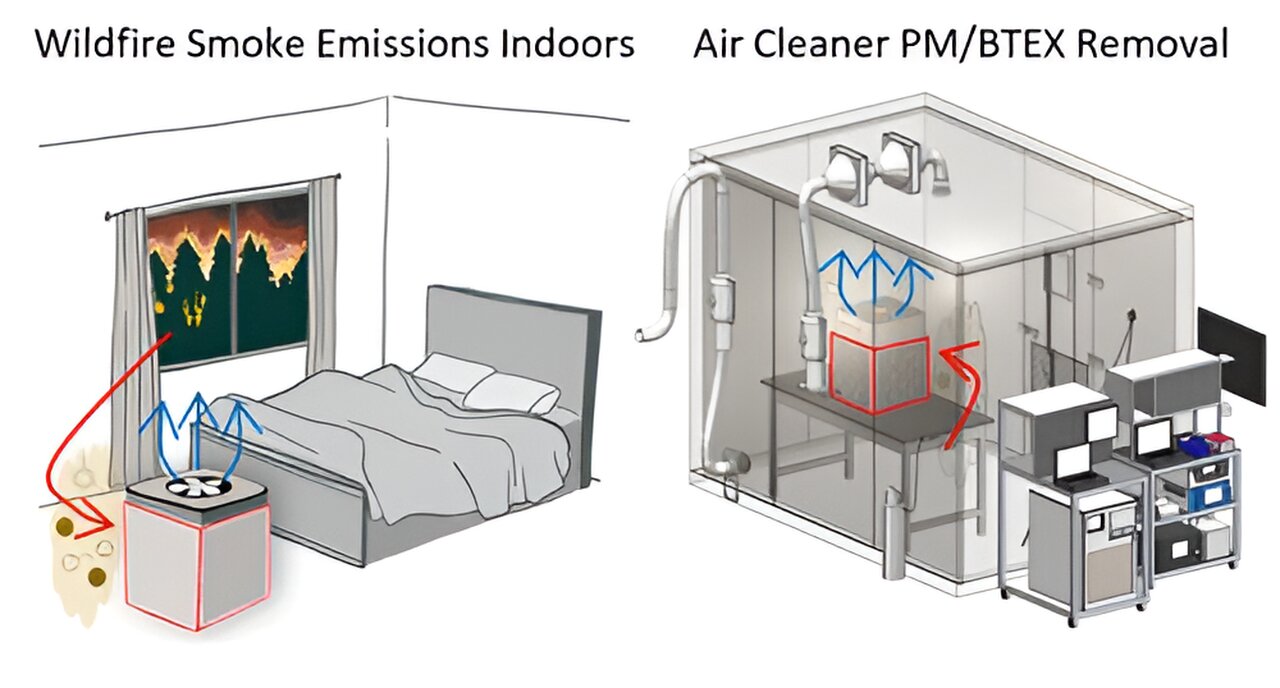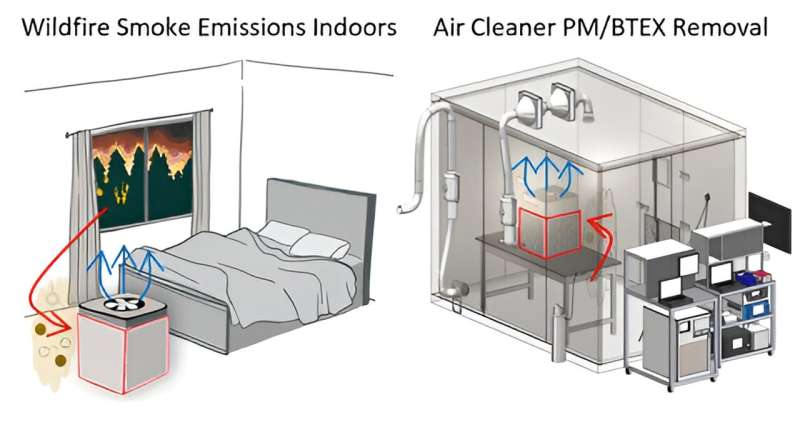

As wildfires become a more frequent and dangerous part of life, especially in the Pacific Northwest, finding solutions that everyone can use is more important than ever. By June 2024, the Pacific Northwest had already seen more trees burn than in all of 2023.
At Portland State University’s Maseeh College of Engineering and Computer Science, two engineers, Joshua Mendez and Elliott Gall, are working on a wildfire research project that could change how we respond to wildfires. Their approaches rely partially on open-source and low-cost technologies, which means they are available for anyone to use, adapt, and improve.
Wildfires don’t just affect the areas where they burn. “By injecting this ash into the atmosphere,” Electrical and Computer Engineering professor Mendez explained, “you’re also affecting this global system as well.”
Having been awarded multiple grants, Mendez and his graduate student Arie Jorritsma developed low-cost sensors that can be launched into wildfire smoke clouds using simple balloons. These sensors collect real-time data about the conditions inside the fire, improving weather models and firefighting strategies.
This technology isn’t just for scientists with big budgets. “The idea with this balloon launch is [to] develop a system that is really cheap that we can deploy in mass,” Mendez said. Instead of relying on expensive equipment, they use mylar party balloons with lightweight sensors attached. This kind of technology could be accessible even to communities with fewer resources.
When it comes to developing the sensors, Jorritsma focuses on making them as flexible and affordable as possible.
“My project is essentially to build a device that can transmit sensor data [and] that’s extremely lightweight and extremely cost-effective,” he said. These sensors, powered by solar panels and supercapacitors, will transmit data via radio frequencies typically used by ham radio enthusiasts.
Taking advantage of existing infrastructure allows the team to piggyback on a network of radio towers already blanketing much of Oregon. “We have the fortune that the network or the coverage for this APRS is actually quite excellent,” Mendez explained, referring to the Automatic Packet Reporting System used by hobbyist radio operators.
“We can track balloons and get data back using this sort of community network of amateur radio towers.”
The open-source nature of their project is a big deal. “The hardware we develop is open source, meaning that it’s something that we can share with the broader community,” Mendez emphasized.
This isn’t just about making the technology available—it’s about encouraging others to improve and adapt it so it can benefit us all. Jorritsma also highlights the long history of open-source development in engineering, including Volvo’s groundbreaking and life-saving invention of the three point seatbelt that was deliberately never patented.
While Mendez and Jorritsma focus on data collection, Gall from the Mechanical and Materials Engineering department is working on how to protect indoor spaces from wildfire smoke. In the Healthy Buildings Research Lab (HBRL) he and graduate student Brett Stinson research ways to clean indoor air during smoke events.
“Wildfire smoke enters your space, sort of regardless of what kind of building you live in,” Gall explained.
To help individuals combat the effects of smoke inside their homes, they’ve developed DIY air cleaners using simple household materials, like box fans and furnace filters.
These DIY solutions, similar to the Corsi-Rosenthal box—coincidentally, one of the box’s inventors, Richard Corsi, served as dean of Maseeh College—have proven to be just as effective as expensive commercial air cleaners. They developed a low-cost air filtration system that can be assembled without any advanced technical training using common household items like box fans and furnace filters.
“The novelty here is that it’s really, really cheap or in some cases free [to improve your air quality],” Stinson said. This approach has benefited many who need immediate, affordable solutions during wildfire seasons.
What makes Gall’s work even more interesting is the potential to turn these DIY filters into a commercial product. A local entrepreneur is already looking to mass-produce the filters, which could make them even more widely available.
Gall and Stinson are considering how best to balance commercialization with their commitment to accessibility. “The idea is to make a filter that’s absurdly cheap but effective, so people can quickly set it up and protect their indoor air,” Gall said.
Gall also emphasized the ethical responsibility of making these tools widely available, especially in emergency situations. “It’s important that these tools are accessible to everyone,” he said, reflecting on the role engineers play in serving the broader community.
The work Mendez and Gall are doing isn’t just about advancing technology—it’s about creating tools that can help people everywhere respond to the challenges posed by climate change. Both teams share a strong commitment to open-source development, which means that their designs are available for anyone to use and improve.
As wildfires and other natural disasters become more common, having the ability to quickly gather and share data can make a big difference in how we deal with these crises. This project is part of a broader movement in engineering towards making tools and technology more accessible to everyone.
By embracing DIY, open-source and low-cost approaches, Mendez and Gall are helping to shift the paradigm in engineering—ensuring that solutions to the world’s most pressing problems are within reach for everyone.
Provided by
Portland State University
Citation:
Up in smoke: DIY tech to combat wildfires (2024, October 11)
retrieved 11 October 2024
from https://phys.org/news/2024-10-diy-tech-combat-wildfires.html
This document is subject to copyright. Apart from any fair dealing for the purpose of private study or research, no
part may be reproduced without the written permission. The content is provided for information purposes only.